The Math behind Covid-19 Translation: Why is it necessary to keep social distance, avoid gathering?
- Tram Ho
People and health officials in the US and Europe are trying their best to slow the spread of the Covid-19 epidemic. Measures of personal hygiene and social distance are being promoted.
Many mass gathering events have been canceled, including family gatherings. The school was temporarily closed, businesses moved to work online, people reduced the load of sightseeing activities, going to public places.
They are all simple, powerful and effective strategies for disease control, besides testing and quarantining infected and at-risk patients.
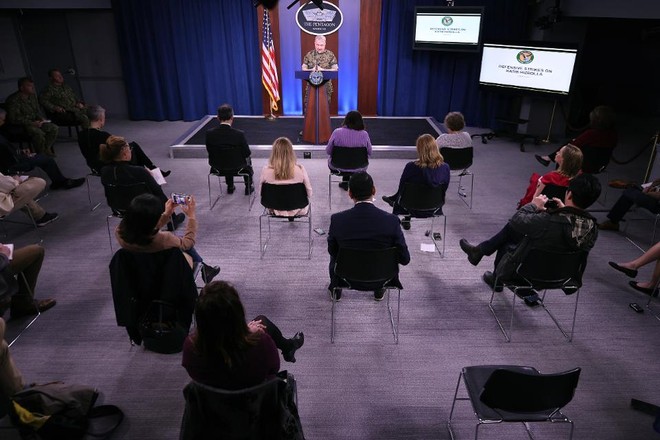
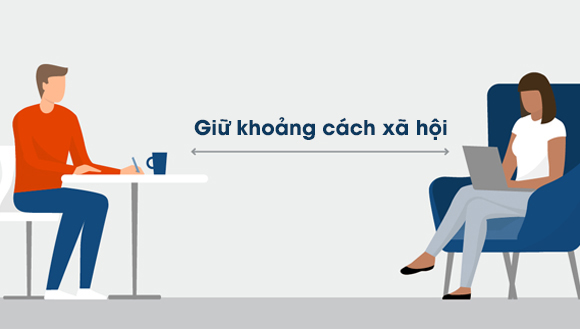
Epidemiologists say all measures to prevent the spread of Covid-19 must be taken in the early stages of an outbreak, when fewer people are infected and most patients will be saved. living.
Conversely, as the disease has spread and become more dangerous, many interventions may become too late. That’s what some countries like China and Italy have experienced, when it seems that overnight, the number of infections and deaths from Covid-19 has increased dramatically.
For the virulent plague epidemic outbreak, it is a fact that will take place. By the cause of a horrific night with this steep graph line can be explained mathematically.
The mathematics behind the plague
Right now, many countries around the world are witnessing the spread of Covid-19 which is exponentially growing. This is when the spread of an infectious disease is proportional to the number of people infected.
Each person infected with Covid-19 is expected to infect a certain number of people. This number is called the basic transmission coefficient R0, now valued at about 2.5.
On average, each person infected with Covid-19 will therefore infect more than 2 people, unless drastic measures are taken to reduce social exposure and quarantine the infected person.
Think of a sequence of numbers multiplied by 2: 1, 2, 4, 8, 16, etc. How many times will you have to count to cross the 1 million mark? It turned out to be only 20 times. And how many steps will it take to surpass 16 million? Only 4 more times.
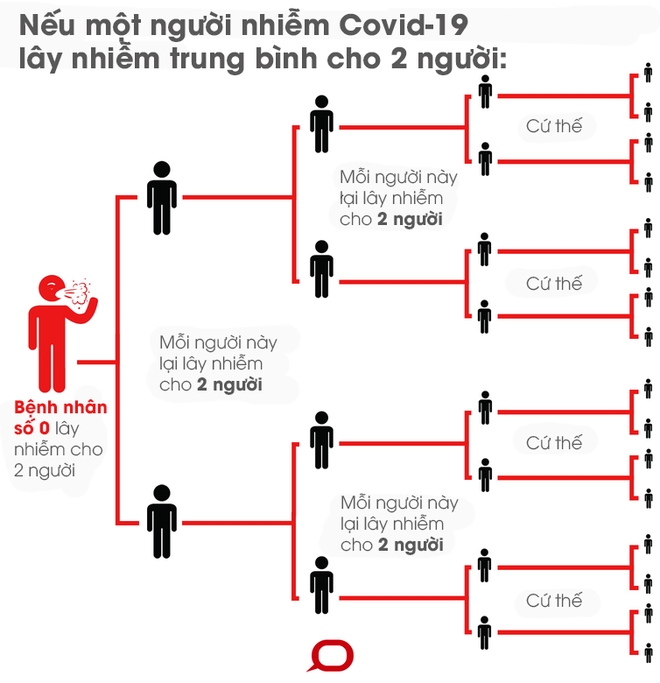
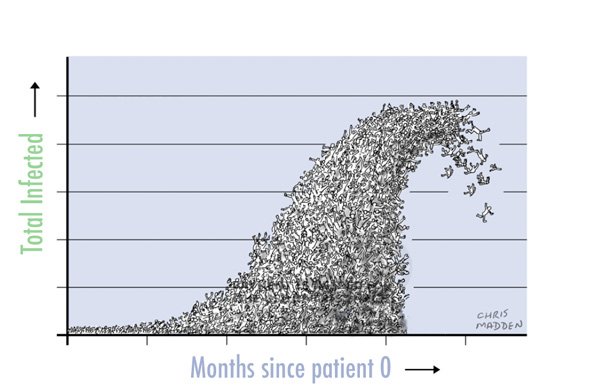
Exponentially is the reason why you feel that Covid-19 initially spread very slowly, creating a subjective feeling, but at some point, it seems to be terrifyingly flaring.
As epidemiologist Adam Kucharski pointed out on his Twitter page, this trend also shows the importance of reducing infection rates at an early stage of the epidemic.
” When the new outbreak broke out, on average, each person with Covid-19 would infect about 2.5 other people. On average, about 5 days of incubation for the next case to appear. So we estimate There will be 2.5 ^ 6 = 244 infections after only one month.
But if we could cut the transmission coefficient in half, each person would then infect only 1.25 others, we would only have 4 new infections in the same period . “
And individual actions can make a big difference. Reuters said a Covid-19 patient in South Korea, called Patient No. 31, did not adhere to the principles of social distance.
While having symptoms of Covid-19 infection, this person was in direct contact with 1,160 others and created terrible clusters of infection. The lesson here is not to be like Patient No. 31. If you have symptoms of fever, cough, shortness of breath, isolate yourself at home to protect loved ones and the whole society.
Flatten the curve
Of course, mathematically speaking, Covid-19 cannot spread exponentially forever. There is an upper limit to the population and over time, people begin to build immunity to the disease, and the infected people begin to recover creating a community immunity effect and the number will be slow. again.
As with many other epidemics in the past, it is likely that we will reach a peak in Covid-19, after which, new infections will begin to diminish until R0 drops below 1 and the epidemic will be suppressed.
However, the important thing we need to do is to combine all the measures to smooth this curve, spread new cases in as long as possible.
This will buy valuable time for hospitals and health systems, allowing them to cycle through limited resources such as patient beds, ventilators and even human resources to treat Covid-19 infected patients. .
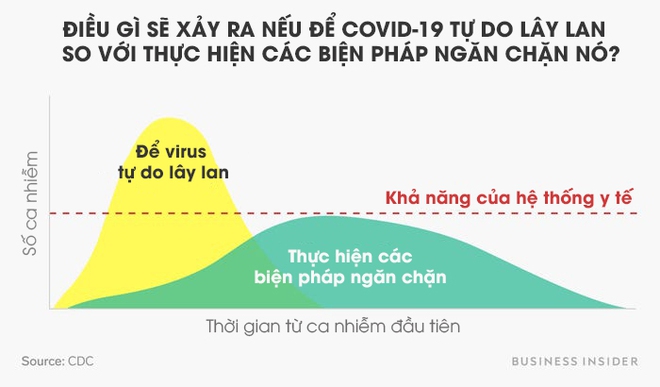
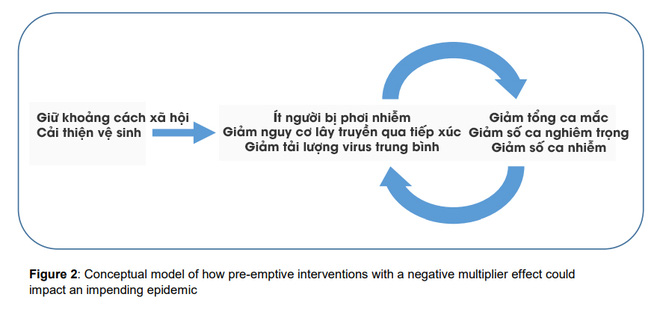
Taking drastic measures to curb the transmission rate of Covid-19, including school closures, the cancellation of public events and online work seems to be an outrageous reaction when the number of cases. Infections in a city or state are few. However, it is the most effective measure during the early outbreak of the disease.
Using data from Hubei Province, China, where the Covid-19 virus originated and spread, and the majority of cases in China, author Tomas Pueyo posted on Medium a conceptual model. which he created, showing that even one day of implementing other social distance-keeping measures could reduce the burden of new Covid-19 cases on the health system:

According to an estimate published in the New York Times, the highest number of cases in the United States can reach 9.4 million if disease intervention measures are not implemented. But with these measures starting to take off today, the cumulative peak can be reduced to 3 million.
In short, interventions to prevent diseases need to be started as soon as possible. It was the golden time we had before the huge numbers came out.
* What should you do when exposed to the risk of a Covid-19 infection caused by the new SARS-CoV-2 virus? Take the following test to check:
Refer to Vox
Source : Genk
